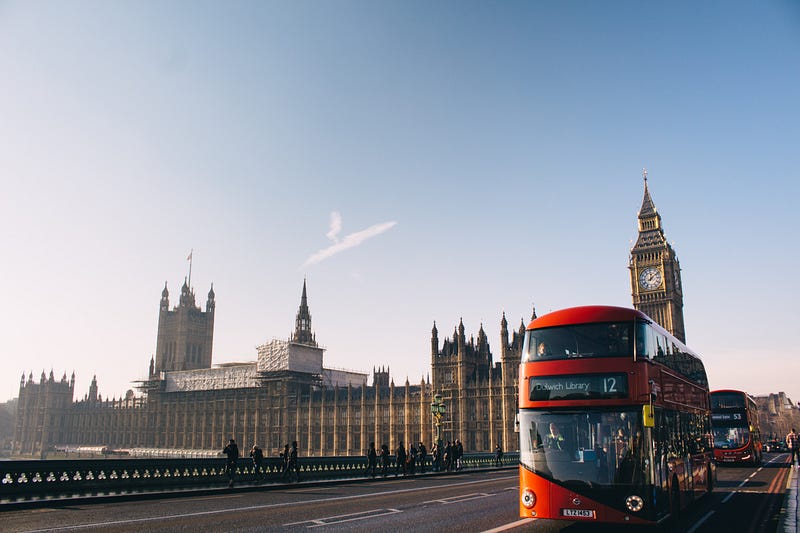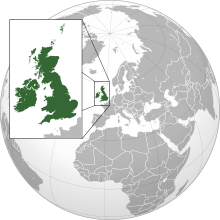Last weekend (14th November 2020), Amazon (or rather, an Amazon customer services agent) failed to understand that Northern Ireland is part of the UK, prompting Twitter users to make partitioning and unification jokes.

It got me thinking: how many people really understand the difference between the United Kingdom, Great Britain and the British Isles?
If you can’t distinguish between the three, you’re definitely not alone. Here’s my guide to help you understand the differences, and avoid some common blunders, like:
- Calling someone from Wales or Scotland (or, god-forbid, Ireland), English
- Using British synonymously with English. English people are all British, but not all British people are English
- Implying that the Republic of Ireland is part of the UK, or, referring to it as ‘Southern Ireland’
This won’t exactly be a history lesson, but I’ve dropped in some anecdotes so that you can make sense of it all.

Great Britain
Great Britain has a few different definitions, which is not the most helpful starting point.
It is generally considered to refer to the geographical area comprising of England, Wales and Scotland, including the surrounding islands that are politically and administratively part of Great Britain. These are the Isle of Wight and the Isles of Scilly in England, Anglesey in Wales and the Hebrides, Orkney and the Shetland Islands in Scotland.
Some definitions also include the Isle of Man and the Channel Islands, but they’re not actually part of Great Britain, and I’ll come back to them when I discuss the UK.
Those of you that are fans of the Olympics might immediately think of ‘Team GB’ and associate it with Great Britain. After all, that would make logical sense.
I’m afraid it’s not that simple. Team GB also includes Northern Ireland, but Team GB was adopted as the short-form in 1999 for ‘marketing’ purposes. Athletes from Northern Ireland can choose whether to represent Team Ireland or Team GB, with 21 of 29 Northern Irish athletes representing The Republic of Ireland and only 8 representing Team GB at the Rio Olympics in 2016.

Therefore the countries and territories of Great Britain are England, Scotland and Wales.
The United Kingdom
Usually referred to simply as ‘The UK’ or confusingly, ‘Britain’, it is actually short for ‘The United Kingdom of Great Britain and Northern Ireland’. Someone from the UK is British, although I would advise caution assuming that a person identifies as such.
The home nations
England was, and still is, the dominant nation in terms of population (84.3% of the total), size (54% of total landmass), wealth (86% of UK GDP) and political power (82% of UK Members of Parliament represent English constituencies).
The first step in developing the United Kingdom was Wales being annexed into the Kingdom of England in 1532 by King Henry VIII (not, perhaps, what he’s most well known for). Scotland and England formed a union in 1707, and Ireland went from a personal union to a formal one in 1801.
This was also the year that the now-famous Union Jack Flag was adopted in its current form – Pairing the previously combined red St George’s Cross of England (and Wales, which did not have its own national identity at the time), with the white saltire (diagonal) Cross of Scotland on the blue background, and the red saltire cross of St Patrick to represent Ireland.

This is a simplified version of events. For more information, read a book or, you know, google it.

The UK ‘gave back’ Ireland (how nice of them) with the Free State Constitution of 1922. This was a momentous and impactful decision, as it led to the split of the Republic of Ireland and Northern Ireland. The conflict between Republicans (seeking an Irish state free from British influence and rule) and Loyalists (loyal to the British Crown) was rife for decades, particularly in the latter half of the 20th century.
The issue of a divided Ireland has once again come to the fore since the UK’s decision to leave the EU in 2016, with the challenge of avoiding a ‘hard border’ between the North and the Republic when the Brexit transition period ends on 31st December 2020.
Whatever the politics, here’s the kicker – The Republic of Ireland is absolutely NOT part of the UK, but Northern Ireland is, along with the three countries of Great Britain.
Overseas Territories
Confusingly, there are 14 overseas territories that are not part of the UK, but that the UK has authority over.
The total population of these territories is only 250,000, so I’ll skip the detail and just say that they’re all on this map, courtesy of Wikipedia.

Crown Dependencies
The previously mentioned Channel Islands and the Isle of Man are not overseas territories, but Crown Dependencies. They are not part of the UK, but they are part of the Queen’s territory. Confused yet? Yeh, me too.
To make it even more confusing, even though they’re not part of the UK, they volunteer to be governed by the UK in certain aspects.
It may seem like semantics but, to people from those locations, the difference is chalk and cheese.

Therefore England, Wales, Scotland and Northern Ireland are the four countries that are officially part of the UK. The Channel Islands, the Isle of Man and the 14 British Overseas Territories are partially governed and administrated by the UK.
The British Isles
The British Isles is the easiest to explain, as it’s purely geographical, although the name has its own controversy as it implies that Ireland is part of Britain.
Anyway, politics aside, draw a big ring around the two islands, Great Britain and Ireland, and you’ve got it.

Your cheat-sheet
Here’s two things to help you make sense of all this.
The Map
First, check out this annotated map from the website Brittanica which visually depicts the differences I’ve just discussed.

The Table
Here’s A handy table that you can screenshot and have a sneaky look at next time you’re about to ask a Welshman where in England they’re from.

There you have it – you now know the difference between them all, or at least a better sense of it than you did before reading this.